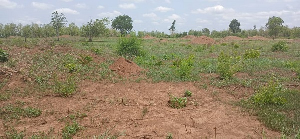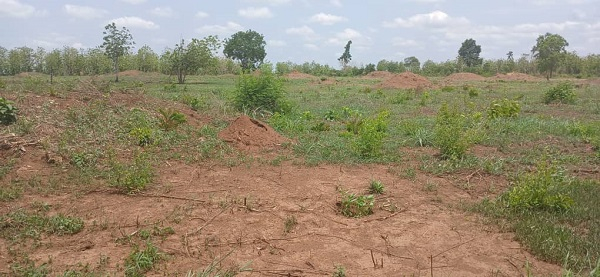 This deterioration is driven by a combination of natural factors
This deterioration is driven by a combination of natural factors
The Sunyani Forestry Division in the Bono Region has expressed deep concern over the ongoing degradation of the region’s forest reserves, warning that this alarming trend is contributing to a steady decline in the number and health of these vital ecosystems.
Once teeming with rich biodiversity and playing a crucial role in maintaining the region’s ecological balance, many of the forest reserves are now under severe threat.
This deterioration is driven by a combination of natural factors such as climatic variations and edaphic (soil-related) challenges and a range of destructive human activities.
The consequences of this environmental decline are far-reaching. The loss of forest cover not only endangers various plant and animal species that depend on these habitats but also jeopardizes the livelihoods of local communities who rely on forest resources for survival.
According to the Sunyani Forestry Division Manager, Mr. Adu Gyamfi, five out of the region’s seven forest reserves namely Tain I, Tain II, Sawsaw, Yaya, and Nsomeri are currently facing severe environmental threats due to human-induced degradation.
“The situation is dire,” Mr. Gyamfi stated. “Five of our seven forest reserves—Tain I, Tain II, Sawsaw, Yaya, and Nsomeri have been significantly depleted. This alarming decline can be attributed to a variety of destructive practices such as illegal logging, cattle grazing, and frequent wildfires.”
Interventions
As part of efforts to mitigate the situation, Gyamfi noted that the Forestry Division has implemented several interventions.
These include collaborating with traditional authorities to protect the Amama and Asukese forest reserves and converting degraded reserves into forest plantations.
This approach aims to promote reforestation, restore lost vegetation cover, and enhance the ecological resilience of affected areas.
Recognising that forests are not only an environmental asset but also a critical component of the region’s long-term development, Gyamfi advocated for a range of solutions.
These include the establishment of a dedicated environmental court, stricter enforcement of forest protection laws, increased community education, and the promotion of sustainable land-use practices.
“These measures are necessary to halt further damage and ensure the future survival of our forest reserves,” he emphasised.


